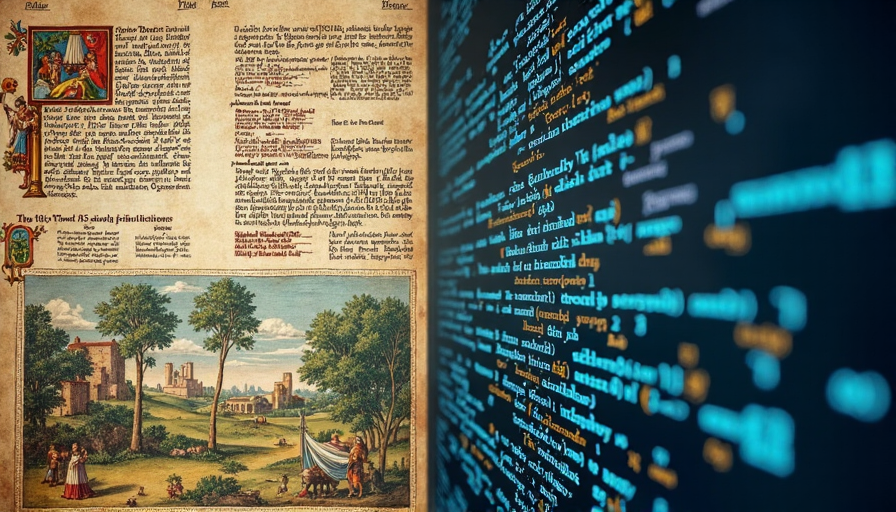
Automating Mathematical Discovery: The Future of AI and Proof Verification
A New Era in Mathematical Research
In a world where computers can already check mathematical proofs, researchers are now exploring how artificial intelligence can evolve to generate entirely new ones. Prominent mathematicians like Terence Tao—an early International Mathematical Olympiad prodigy and a Fields Medalist—have begun investigating how to translate the deep, intuitive process of mathematical discovery into digital form. Tao envisions AI not as a replacement for human creativity, but as a transformative assistant that streamlines routine tasks such as error checking, numerical experiments, and literature review. This shift could free human mathematicians to tackle the deeper, high-level concepts of modern mathematics.
Harnessing Interactive Theorem Provers
One of the central strategies for digitizing math research is the development and use of interactive theorem provers (ITPs). Proof assistants like Lean, Coq, and Isabelle represent proofs as computer-readable code, enabling users to simply hit a "verify" button to confirm the correctness of complex logical arguments. Converting traditional pen-and-paper proofs into this formal language—known as formalization—opens up new avenues for automated verification.
While current ITPs mainly check proofs after human mathematicians have done the creative work, there is growing interest in moving towards automated theorem provers that generate proofs from scratch. This transition could mark a significant step in leveraging AI to do the heavy lifting of mathematical discovery.
Pioneering Collaborative Proofs
For more than four decades, systems like Coq have been used to verify monumental achievements, including the proof of the four color theorem and the busy beaver problem. Yet, the task of formalizing a proof often involves extra layers of detail compared to traditional mathematics, sometimes taking thousands of hours in some cases.
Recent developments, however, have seen a surge in collaborative partnerships—fueled by the rapid growth of libraries like Lean's mathlib. With major figures such as Peter Scholze, Tim Gowers, and Terence Tao championing the cause, formalized proofs are becoming more accessible, efficient, and collaborative. Mathematicians can now work together without needing to fully decode one another’s methods—the proof assistant serves as a trusted referee, flagging any missteps immediately. This approach not only streamlines the process but also sets the stage for massive global collaborations reminiscent of the Polymath Project, yet powered by the relentless accuracy of digital verification.
A New Frontier in Machine Learning
With AI systems like DeepMind’s AlphaGo and AlphaZero having already proven their mettle in narrow, well-defined games, the next logical challenge is to bring similar methods into the expansive arena of mathematics. Unlike games such as chess or Go, where the rules and outcomes are clearly defined, math requires a blend of creativity and rigorous proof verification—a challenge that gives AI a unique open field with a clear ground truth.
Researchers have begun exploring a concept called autoformalization, where AI translates natural language proofs and informal mathematical notation into verifiable code. Christian Szegedy’s pioneering proposal includes training models to work in both directions—from informal proofs to formal code and back—thereby ensuring cycle consistency. With this paradigm, AI could one day self-generate and verify entire proofs, gradually building up a repertoire of verified mathematical truths.
Innovations Driving Self-Play in Math
DeepMind’s recent AlphaProof system has taken significant strides by applying self-play strategies. In this model, one component of the AI generates new problems while another attempts to solve them. This iterative process constantly raises the bar, enabling the AI to tackle progressively more challenging problems, much as AlphaZero mastered various board games. Although this method currently excels in standardized settings like International Mathematical Olympiad (IMO) problems, its potential for cutting-edge research remains a tantalizing prospect.
Balancing Creativity and Rigor
The ultimate ambition of AI in mathematics goes even further than just automating proofs—it aims to spark genuine breakthroughs by suggesting novel conjectures. Legendary deep learning pioneer Yoshua Bengio has suggested using information theory to capture the essence of what makes a mathematical idea interesting, compressing vast amounts of knowledge into compact, elegant statements.
Other innovators, like Gabriel Poesia with his Peano system, are experimenting with approaches independent of human guidance, allowing the AI to develop its own strategies from a limited set of actions. Meanwhile, mathematicians like Timothy Gowers are integrating human insights directly into the algorithms, championing a hybrid model that melds introspection with computational strength.
Looking Ahead: The Future Impact of Digitized Mathematics
The integration of AI and formal proof verification is poised to transform mathematical research. It is widely anticipated that these systems may soon outperform human competitors in settings like the IMO and quickly become indispensable tools in everyday research. Furthermore, these advances in mathematical reasoning are expected to trigger breakthroughs in AI itself, leading to more robust models with improved reasoning capabilities and fewer errors.
While the quest to generate entirely original theorems remains a formidable challenge, even incremental improvements in automated theorem proving could revolutionize fields like software verification and complex system analysis. As tech giants and startups from xAI to DeepSeek invest resources in these innovations, the coming decade could witness a paradigm shift in how mathematics—and by extension, human reasoning—unfolds.
Mathematics has long been the foundation of scientific progress, and now it is set to become the proving ground for the next generation of AI.
Note: This publication was rewritten using AI. The content was based on the original source linked above.